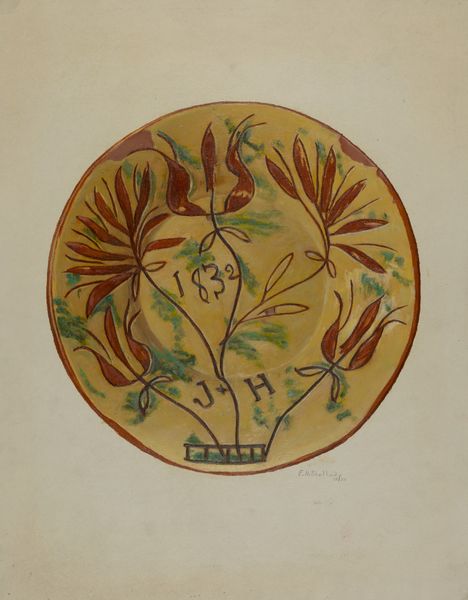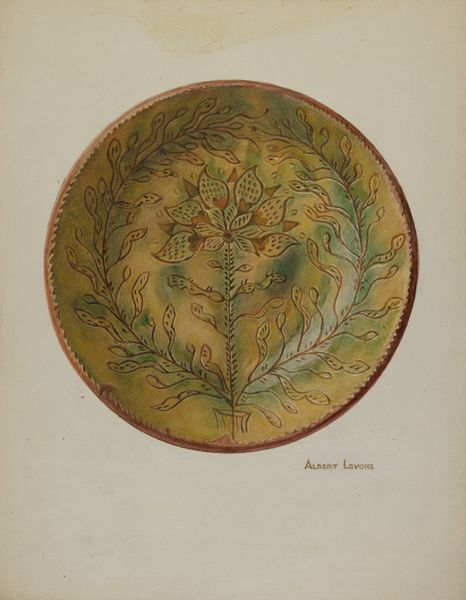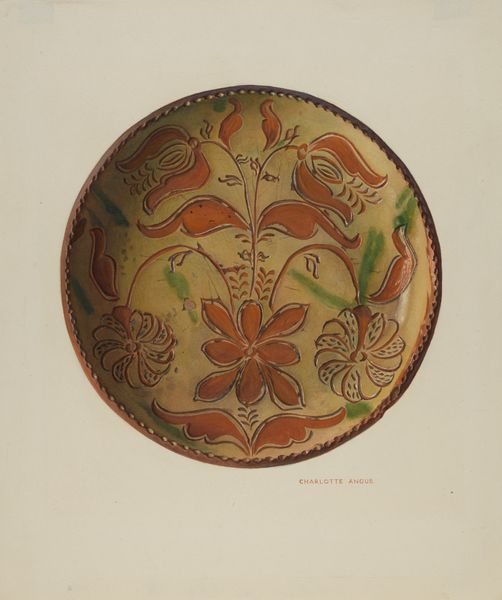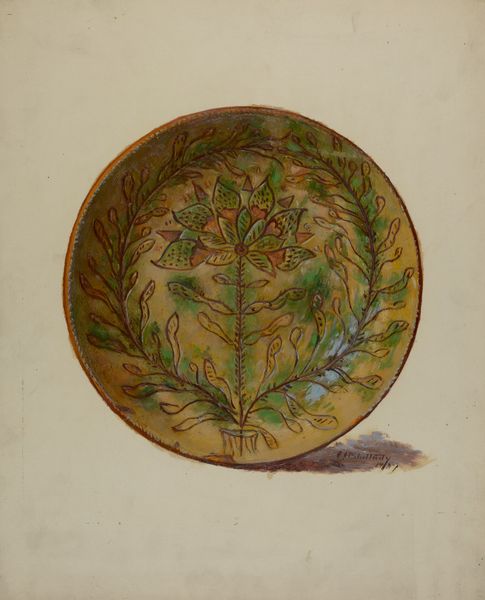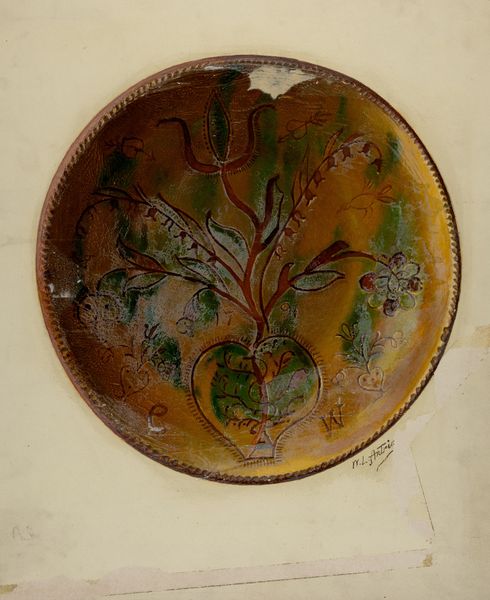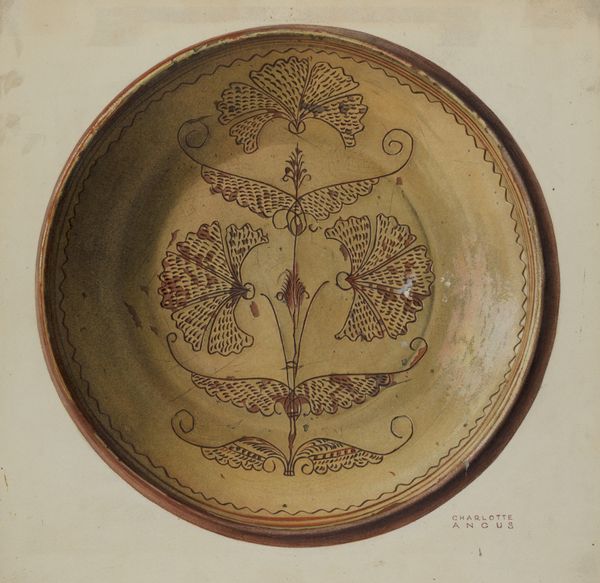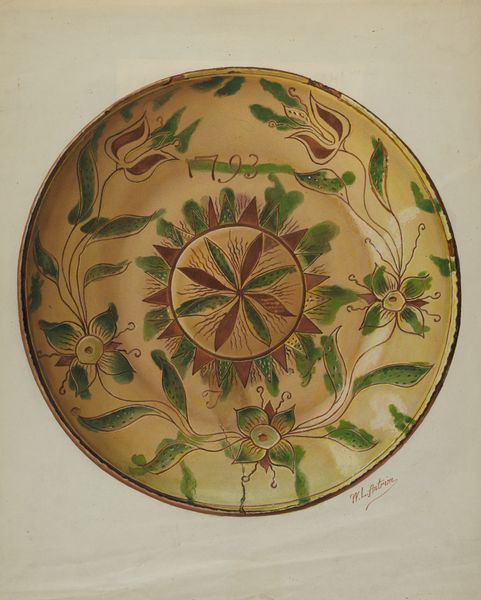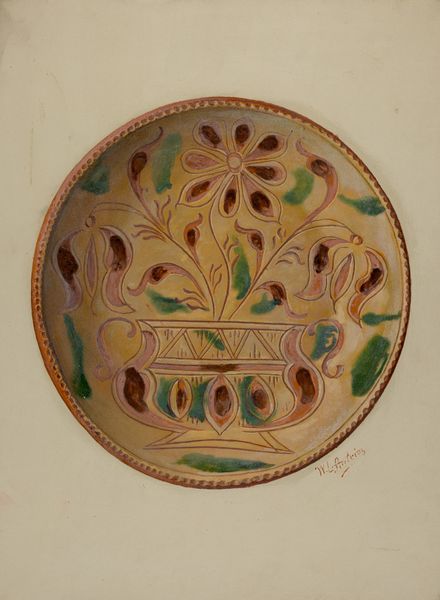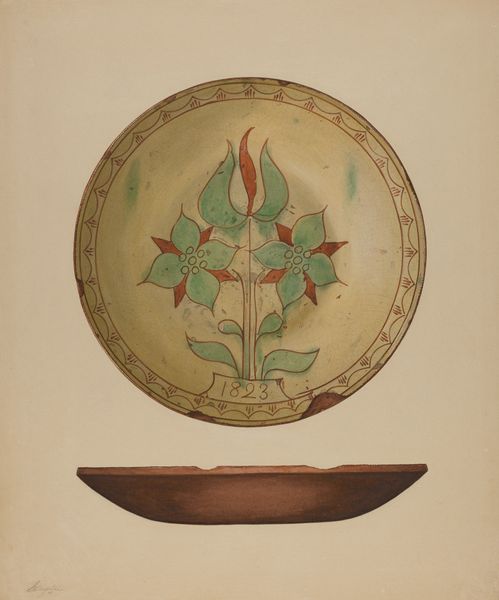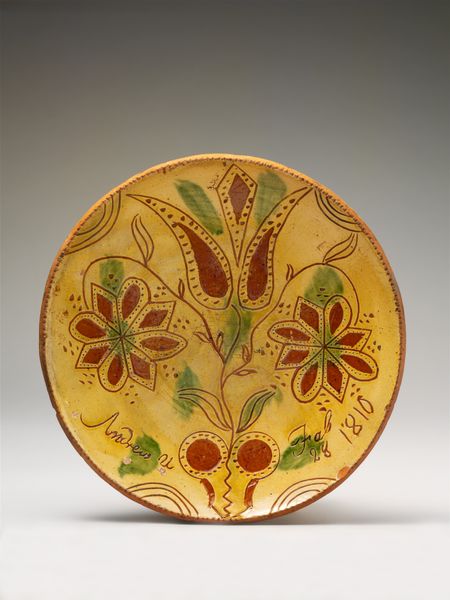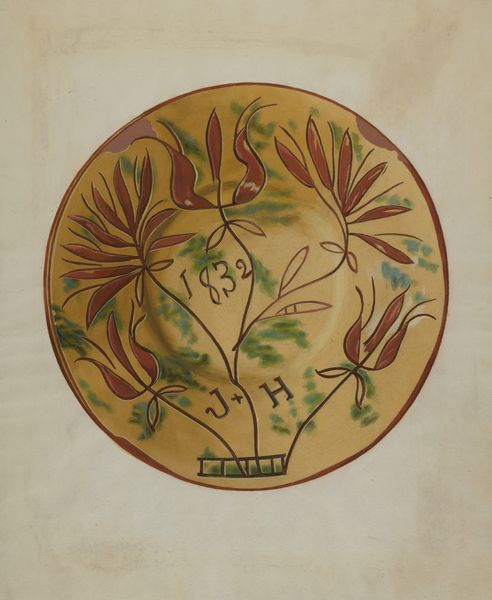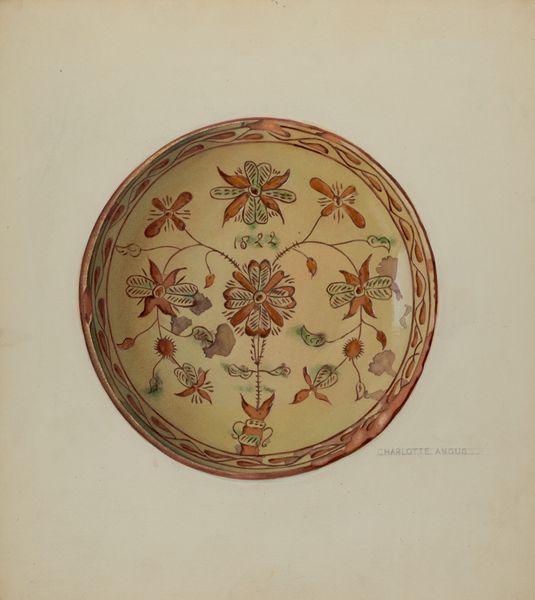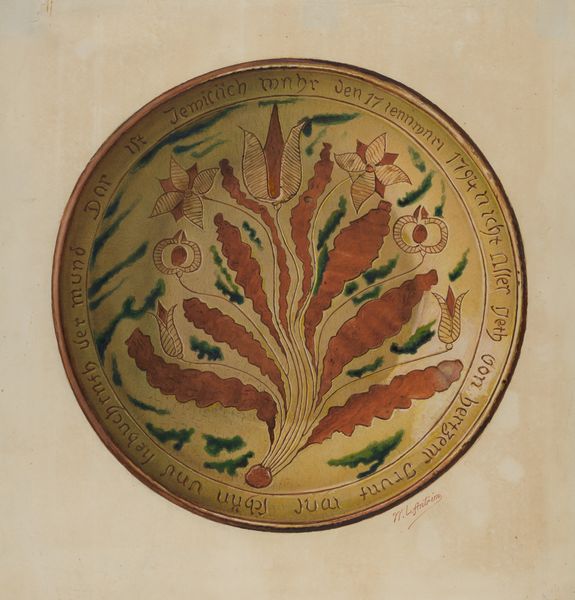
drawing, painting, watercolor
#
drawing
#
water colours
#
painting
#
oil painting
#
watercolor
#
watercolor
Dimensions: overall: 37.7 x 38.7 cm (14 13/16 x 15 1/4 in.) Original IAD Object: 11 1/4" in diameter
Copyright: National Gallery of Art: CC0 1.0
Curator: Welcome. Today we’re looking at “Dish,” created sometime between 1935 and 1942 by Charlotte Angus, using watercolor as her medium. Editor: It’s strangely appealing! There's a rustic, almost naive charm. It gives the sense of domestic craft – like something made to be used every day rather than hung on a wall. Curator: Precisely! This pushes us to consider the functionality and societal place of decorative arts at the time. The “Dish” could reveal interesting details about design influences, mass production of domestic pottery, and even gendered labor in the applied arts during the interwar years. I see the rough brushstrokes and somewhat uneven coloring and begin thinking of the economics of production, skill as labor, etc. Editor: Absolutely, the visible handcraft is part of the story. But for me, this invites a different angle. What social function did art such as this perform during these volatile periods in history? We need to think about the rise of different forms of visual literacy among audiences who might find their domestic settings enriched and invested with cultural capital through accessible design choices. This is especially significant if it provided an important and affordable outlet during more fraught historical moments. Curator: Interesting. To my mind, it invites questions about its value. The watercolors imitate something functional - ceramic glaze? Is it referencing or challenging the division between fine arts and everyday objects? What kind of skills are valorized? Editor: All are great angles of interrogation and perfectly demonstrate how what seems at first glance to be a quaint representation can serve as a catalyst for thinking about the social, economic and cultural circumstances that shape artistic production, display, and spectatorship! It prompts reflection upon accessibility and democratization and even artistic agency outside of traditionally sanctioned channels like official institutions and professional exhibition venues. Curator: I completely concur. This dish exemplifies the complexity hidden within commonplace items when considering material practices, artisanal value, and class distinction within the visual landscape of the past. Editor: Exactly! Hopefully our observations stimulate new interpretations, as well as the questions of value or viewership from any listener that seeks to interpret such artistic interventions within history.
Comments
No comments
Be the first to comment and join the conversation on the ultimate creative platform.
